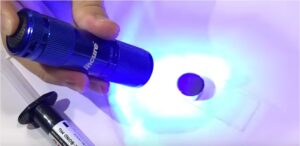You poured your heart and soul into your resin project, following all the instructions meticulously. But now, after curing, you discover a frustrating truth: the surface is still tacky! Fear not, fellow crafters! This is a common issue with resin, and there are solutions. Here’s how to fix a tacky surface after resin cures:
Understanding the Cause:
Before diving into solutions, let’s explore why your resin might be tacky:
- Incorrect Mixing Ratio: The most frequent culprit is an inaccurate resin-to-hardener ratio. Even a slight imbalance can disrupt curing and leave a sticky surface.
- Low Temperatures: Resin cures best in warm environments. If your workspace is too cold, curing can slow down or become incomplete, resulting in tackiness.
- Uneven Mixing: Improper mixing can leave pockets of uncured resin in your project, creating tacky spots.
- Insufficient Curing Time: Resin needs sufficient time to fully cure. Curing times can vary depending on the brand and thickness of the resin. Be patient!
Fixing the Tacky Surface:
Now, let’s get down to business! Here are some methods to fix a tacky resin surface:
Option 1: Recoat with Fresh Resin:
- Clean the Surface: Gently wipe the tacky surface with a lint-free cloth dampened with rubbing alcohol. This removes any dust or debris that might hinder the new layer’s adhesion.
- Mix Fresh Resin: Ensure accurate measuring this time! Following the manufacturer’s instructions, mix a fresh batch of resin and hardener.
- Apply a Thin Layer: Using a brush or applicator, apply a thin layer of the new resin mixture over the entire tacky surface. Be mindful of creating drips or unevenness.
- Let it Cure: Allow the new resin layer to cure completely as per the manufacturer’s recommended time.
Option 2: Sanding:
- Choose the Right Grit: Use fine-grit sandpaper (around 120-grit) to avoid damaging the cured resin surface.
- Sand Gently: With light, even strokes, sand the tacky area until it loses its stickiness. Be cautious not to sand too aggressively, as you don’t want to go through the cured layer.
- Clean Up: Wipe away any sanding dust with a damp cloth.
- Optional: Apply a Sealer: For extra protection and a polished finish, you can apply a clear resin topcoat after sanding. Let it cure completely.
Prevention Tips:
- Always Measure Accurately: Invest in graduated measuring cups or syringes for precise resin and hardener ratios.
- Warm Up Your Workspace: If possible, pre-heat your workspace to around 70°F (21°C) before starting your resin project.
- Mix Thoroughly: Scrape the sides and bottom of your mixing container to ensure all the resin and hardener are fully combined.
- Cure Time is Key: Don’t rush the curing process. Allow the resin ample time to cure completely based on the manufacturer’s recommendations.
- Test a Small Area: If you’re unsure about a method, test it on a small, inconspicuous area of your project first.
Conclusion:
A tacky surface after resin curing can be frustrating, but it’s definitely fixable! By understanding the cause and applying the right techniques, you can salvage your project and achieve a smooth, beautiful finish. Remember, prevention is always better than cure. So, follow best practices for mixing, temperature, and curing time to ensure a successful resin project every time!






